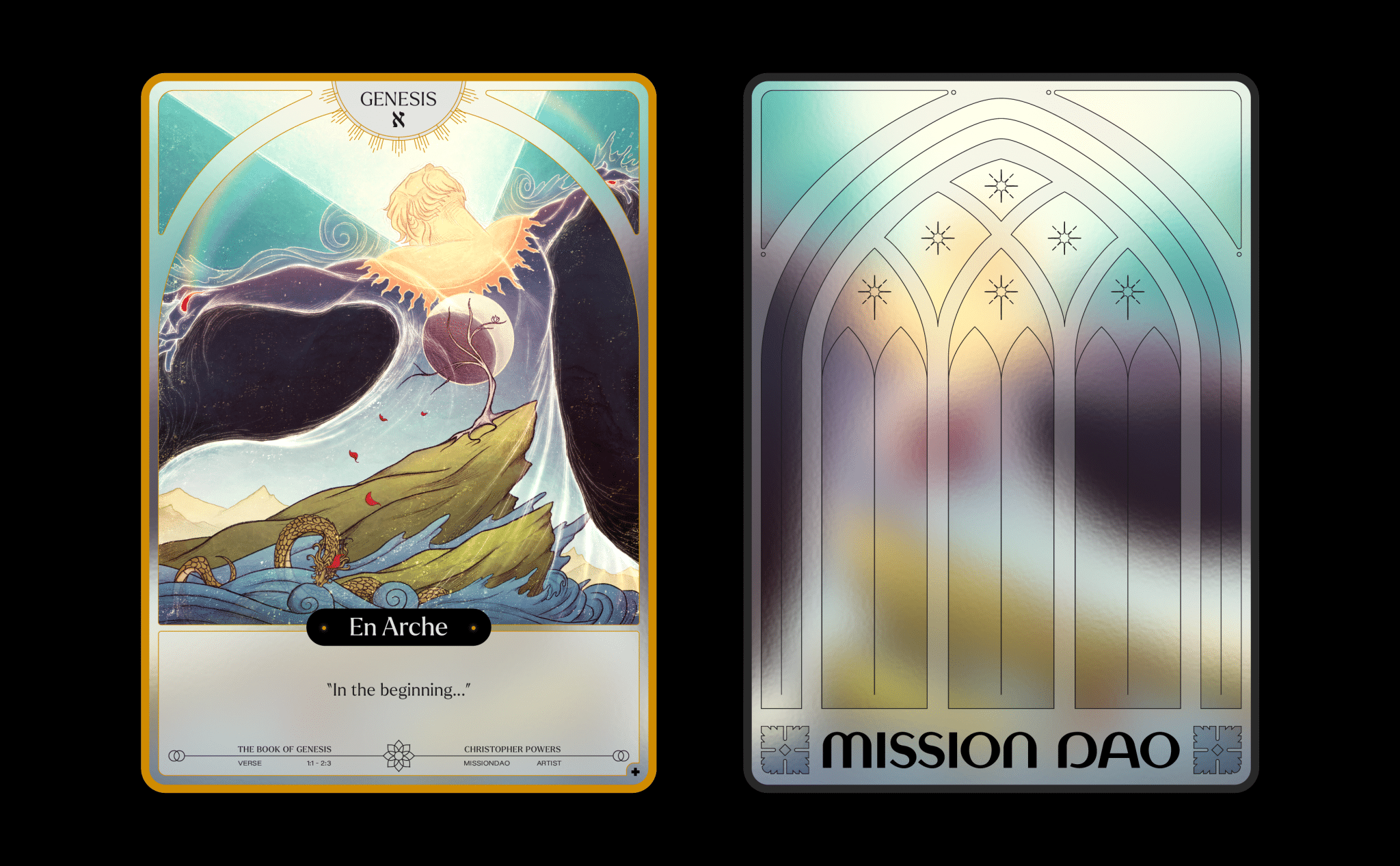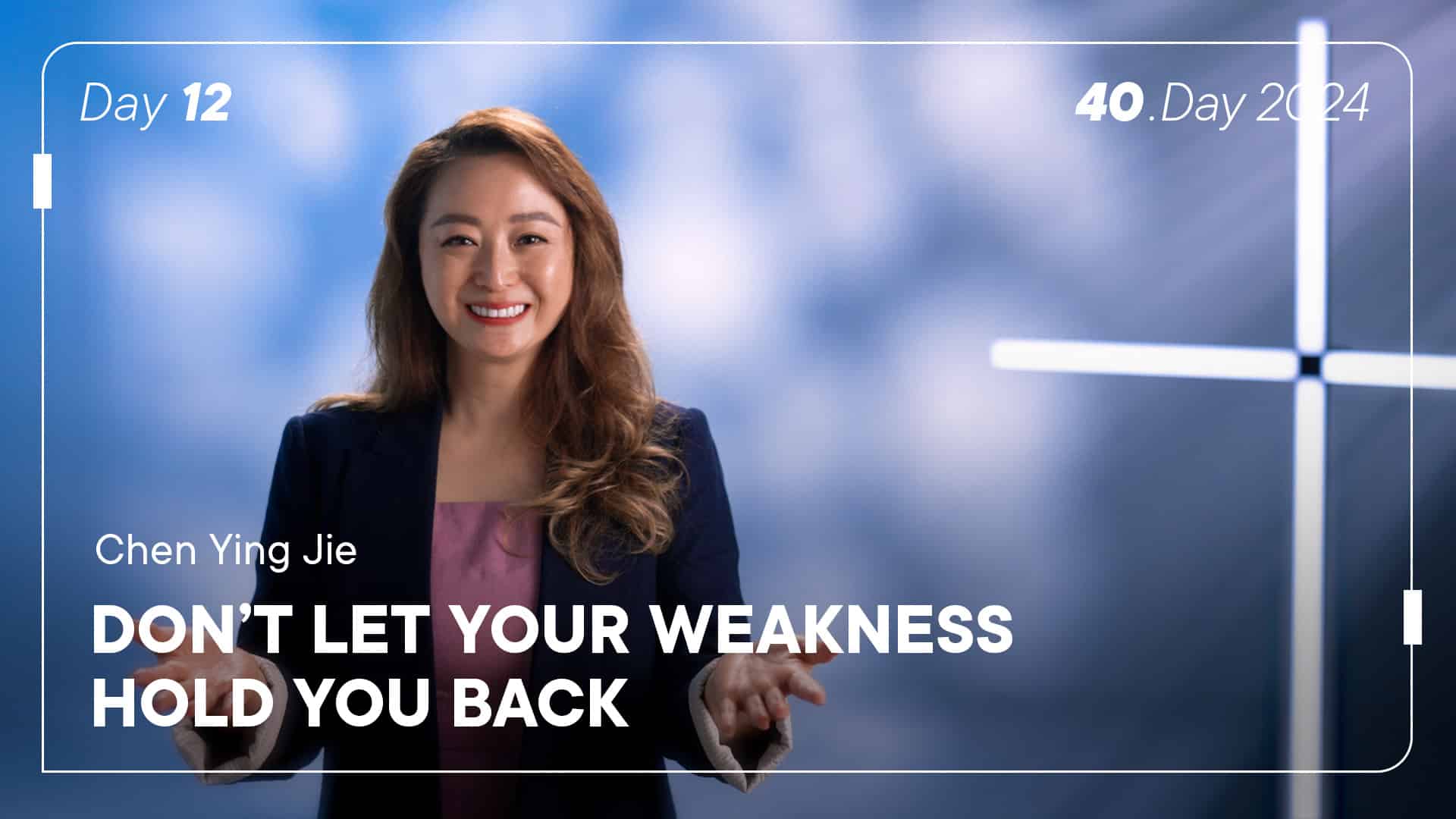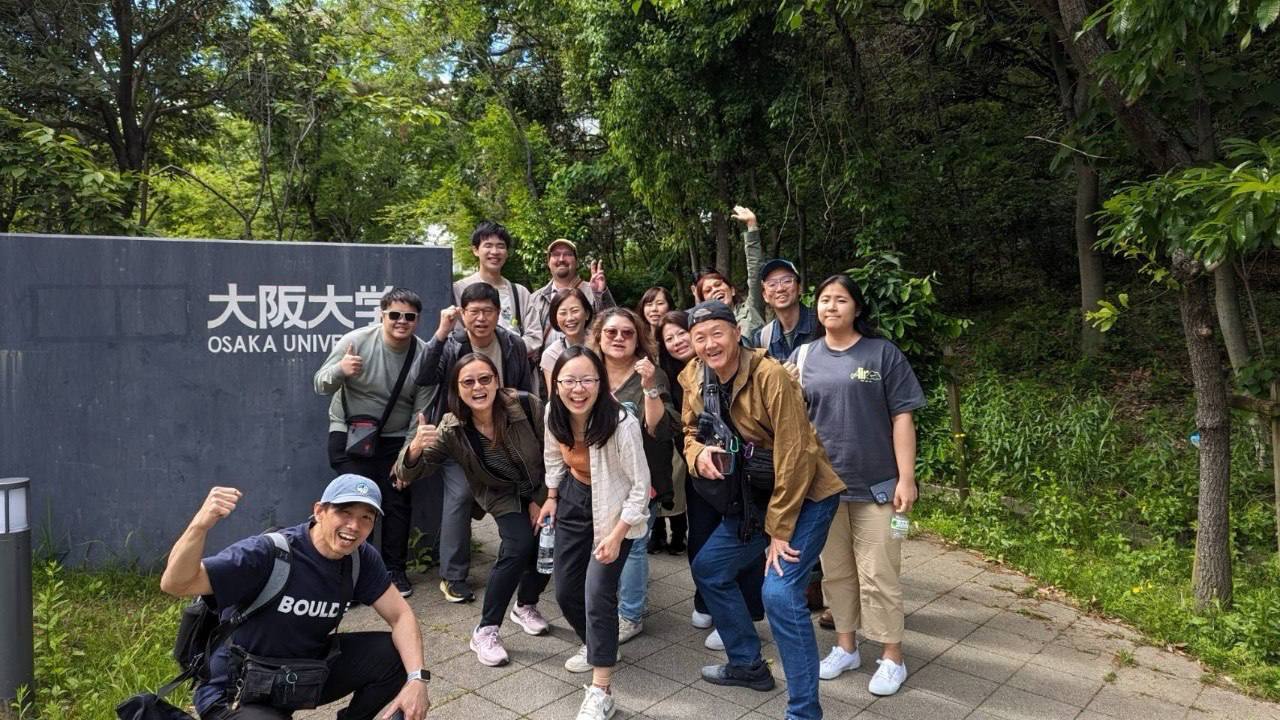Vision of a metaverse missionary: “The church at the forefront of technology, using it for good.”
Konstanze Tan // March 16, 2022, 11:12 am

"Missionary to the Metaverse" and end-time financier Broderick Sim shares the importance of using digital tools to introduce Jesus and fund missions in the metaverse, where the current and coming generations of digital natives are going to be. Photo by Julien Tromeur on Unsplash.
Broderick Sim, 29, goes by the title “Missionary to the Metaverse”.
The professional non-fungible token (NFT) fund manager is constantly dreaming about how the Church can leverage the latest technologies for evangelism and funding missions.

Broderick Sim is always “praying, dreaming and thinking” about how the church can leverage the newest technologies to tell the story of Jesus. All photos courtesy of MissionDAO unless otherwise stated.
The term “metaverse“, coined by a science fiction writer three decades ago, refers to a virtual environment where people interact, work and even shop. It resurfaced to public attention when Facebook renamed itself “Meta” last October.
It may sound like a distant reality to some, but the digital tools of the metaverse are already being used to enrich everyday experiences. Museums and magazines use them to make still artefacts and images pop out from a page. The gaming industry uses them to create virtual reality (VR) games; in a popular one, players have lost weight by batting 3D blocks to the rhythm of adrenaline-pumping music.
“There is an impending mass migration to the metaverse and we want to ride on this wave of change.”
The same digital tools could be used to articulate the gospel in a new way.
Think free-for-download immersive experiences of Bible stories and digital evangelistic rallies, for instance.
Think empowering Christians to fundraise for traditional and digital mission initiatives that align with their convictions. This is what Broderick is doing through the founding of MissionDAO, which he calls “the world’s first transparent and decentralised missions-giving ecosystem”. This decentralised autonomous organisation (DAO) was officially launched last Friday (March 11).
As a self-described futurist and technologist, Broderick’s interpretation of the Great Commission (Matthew 28:16-20) is largely digital.
And as a former youth overseer who preached regularly to thousands of young people, Broderick yearns to bring the gospel to the metaverse, right where the current and coming generations of digital natives are going to be.
“The metaverse is the next frontier of human connectivity,” Broderick told Salt&Light. “There is an impending mass migration to the metaverse and we want to be present and ride on this wave of change.”
Getting tossed in Noah’s ark
Broderick imagines that in the metaverse, missionaries will hit the streets not just with Bibles and gospel tracts, but with virtual reality (VR) headsets.
“Metaverse missionaries can download virtual reality gospel experiences into their headset and set up booths on the streets so that people will be drawn in by the new technology and stop by to lose themselves in the experience.”
High-quality VR experiences are easy tools to introduce people to the story of Jesus.
With special goggles and a sound system that are included in such headsets, one can travel back to the very beginning of time and learn the story of man’s rebellion while strolling through the Garden of Eden. Or get tossed and turned in Noah’s Ark. Or scale the unfinished Tower of Babel.
One can listen to the Messiah preach the Sermon on the Mount. Or walk and stumble alongside Him as He bears the cross on the path to Golgotha.
Broderick believes that high-quality VR experiences are easy tools to introduce people to the story of Jesus, to open doors for “honest conversations” about God, sin and repentance, forgiveness and transformation.
As it is, multitudes have been receiving salvation, prayer and healing online during pandemic-related restrictions on physical church services worldwide over the past two years. Pastors have been warming up to digital evangelism, posting bite-sized sermon clips on video-sharing platform TikTok.
Lessons from the Gutenberg Bible
Broderick is a proponent of the church entering the metaverse, and using its digital tools, instead of shying away from it.
“The last time the Church properly leveraged technology was in the 15th century, when the printing press was invented,” he said.
The Gutenberg Bible was the first book ever printed. “The gospel was propagated because the Church was at the forefront of technology.
The Gutenberg Bible was the first book ever printed and it democratised access to the written Word at a time when copies of the Bible were made and kept by an elite few.
“The gospel was propagated because the Church was at the forefront of technology.”
When radio and television came on the scene in the early 20th century, the Church “hesitated” to evangelise through these technologies.
“Evangelists were calling television a ‘one-eyed monster’ and warning Christians against the evils of Hollywood,” said Broderick.
“Because we hesitated, we allowed the culture of the world to dominate these technological spheres.”
The Church has remained cautious of more recent technological upgrades, like the Internet and social media.
“Because we hesitated, we allowed the culture of the world to dominate the technological spheres of radio and television.”
Broderick remembers advising his youth congregation to “get your face off Facebook and get your face into The Good Book”.
He recalls asking them, “Why spend two hours on TikTok and get your brain melted and lust activated by suggestive dance videos when you could have spent that time reading the Bible?”
When he started coming across bite-sized faith-based clippings, created by pastors, which were amassing millions of views, Broderick became less adversarial.
“What I really should have said to the youth is this: ‘You guys should invade TikTok and create content that preaches the gospel on TikTok’.”
He has noted that vices have already begun to dominate the metaverse, the next frontier of human connectivity.
He found himself wondering: “Will the church stand back again?”
A new way to fund missions
As Broderick watched the applications for key metaverse technologies – NFTs, DAOs and blockchains – grow exponentially in the secular world, he kept wondering: How can the church use these digital tools to spread the good news of Jesus?
With MissionDAO, he is seeking to create a digital vernacular for real-world missions fundraisers.
Instead of physical accounts books and spreadsheets, transactions on MissionDAO are automatically written onto the blockchain, an immutable digital ledger.
Instead of purchasing merchandise sold at a typical fundraiser, donors contribute by buying non-fungible tokens – digital art pieces – which are traded and sold using cryptocurrency. At MissionDAO, these digital collectibles are original creations by Christian artists inspired by Biblical narratives.

MissionDAO’s first membership token: A 3D digital collectible card that slowly reveals the Genesis narrative of mankind’s fall as it spins. It was created by Christopher Powers (also known as Full of Eyes) from the USA.
For Broderick, a perk of fundraising in a decentralised digital space is the movement of decision-making power “into the hands of the people”.
Every MissionDAO member gets a say in which Christian missions initiatives and businesses the DAO should support. As members propose, debate and vote for these initiatives, the blockchain permanently records every decision made and makes this information available to all members.
MissionDAO funds will be released – not by a human middleman but by a smart algorithm – only to initiatives which manage to garner a supermajority vote (about 70-75%) at regular townhall meetings.
Restoring giver confidence
The blockchain was originally created in 2008 as a system to publicly authenticate and secure transactions of a newly created digital currency, Bitcoin.
In 2017, Broderick started dabbling with cryptocurrency trading as a hobby and was getting more interested in the underlying blockchain technology which had captured public attention.
“What if givers could see where their money is going? I think that would absolutely restore some level of confidence.”
Around the same time, stories were emerging of church funds being misappropriated and televangelists “buying fancy stuff”. Amongst his friends, Broderick was noticing a “decline in giver confidence”.
With the applications of blockchain technology expanding far beyond its cryptocurrency origins to a broad range of industries, it occurred to Broderick to use the technology to manage church funds in a transparent, accountable way.
“What if givers could see where their money is going? I think that would absolutely restore some level of confidence.”
Then a full-time creative executive at a local church, Broderick made an audacious suggestion to his colleagues: “Let’s move all our accounts onto the blockchain. We need to leverage on this technology today.”
But as the blockchain was still very much in its infancy, his suggestion was not adopted.
The digital toad
Then in 2021, the gaming industry picked up blockchain technology to create play-to-earn games, where players can earn real-world money from owning and trading non-fungible tokens. Millions across the world – Broderick included –were making handsome profits by multiplying, selling, and trading digital illustrations of cartoon monsters as part of the game.
He started investing in other NFT-based games and became “so successful that a major NFT exchange started taking notice”. The exchange offered Broderick a job as a professional NFT fund manager, which brought him one step closer to becoming the “end-time financier and missionary” that his pastor prophesied he would be, in 2021.
At that time, Broderick’s job scope at church involved neither finance nor mission work.
“I was just this dude who enjoyed talking about the Bible,” he said.
At that time, Broderick’s job scope at church involved neither finance nor mission work.
He marvels at the acceleration of events. “Who would have thought that just a few months down the road (from the prophecy), I would start MissionDAO, and even become a professional end-time financier?”
The months leading up to MissionDAO were peppered with miraculous successes and major mistakes.
Once, Broderick made his entire year’s wage as a church employee overnight in a “crazy” NFT trade. But he spent a half of that profit “buying random NFTs” and “making a lot of mistakes”. Thankfully, he had earlier heeded a friend’s advice to save the other half of the profit.
It was one of Broderick’s biggest mistakes which led him to his first DAO encounter.

MissionDAO’s costly origins: Broderick purchased a digital illustration of a toad (pictured) which has since dropped in value by more than a thousand dollars.
In that costly mistake, he had entered a DAO by buying a digital illustration of a toad. Its value has since dropped by more than a thousand dollars.
Unexpectedly, being in the DAO turned out to be “very fun”.
“Whether the discussion was about improving the organisation website design or getting new developers onboard, I felt that my vote and voice mattered,” he said.
Spirit-led consensus
By weaving consensus decision-making into MissionDAO, Broderick hopes fundraising will be a more participatory process with laypeople proposing and voting for specific initiatives which resonate with them.
MissionDAO is an expression of Broderick’s enduring captivation with how decisions were made in the early church.
The Book of Acts, which traces the birth and development of the early Church, records instances where decisions were made in a communal fashion.
Broderick decided to create a space for believers of this generation to make consensus-based decisions in advancing the gospel.
One involved selecting an individual to take over Judas Iscariot’s apostolic ministry (Acts 1:12-26).
“I always thought that only the 11 disciples came together to discuss and decide. Actually, 120 disciples made the decision together,” said Broderick.
In separate instances, thousands of members participated in the election of the Seven Deacons (Acts 6:1-6), and the whole church was involved in resolving doctrinal disagreements (Acts 15:22).
“The disciples, deacons and elders were heavily involved. But the Bible also mentions that the decisions seemed good to the Church, the called-out ones of God (Greek: ekklēsía).”
Inspired, Broderick decided to create a space for believers of this generation to make consensus-based decisions in advancing the gospel.
“What distinguishes MissionDAO from other democratic organisations, is that the Holy Spirit, which dwells in all DAO givers, will be present in all its decision-making processes.”
NFTs to support missions
Today, non-fungible tokens form a billion-dollar industry. Stories of individuals making handsome profits (and staggering losses) through NFTs abound.
But to those wondering if one can make a handsome profit with a MissionDAO non-fungible token, the team reiterates that MissionDAO is “not a financial instrument for capital gain”.
This is because all the funds invested into MissionDAO, through the purchase of its NFTs – at a price of US$300 to US$400 (S$410 to S$546) each – will go toward supporting mission work.
“Don’t expect anything back, except for a lot of happiness and purpose,” Broderick said.

Partnering with missionary-entrepreneurs, MissionDAO supports traditional and digital mission work – like Project Samart (“ability” in Thai; pictured) – that provides marginalised communities with salaried work. Photo from toncedar.org.
Seventy percent of funds will be channeled toward mission initiatives, 20% to operations, and a remaining 10% to a community wallet, which funds a member rewards system. The rewards are Christian-inspired merchandise created by MissionDAO partners, such as local apparel shop Superblessed.
Conventional NFTs are transacted with Bitcoin or Ethereum, which in some instances have lost as much as 17% of value overnight. MissionDAO says it preserves the value of its NFTs by transacting in stablecoins, which shield its funds from extreme price swings by being pegged to a real-world asset – the US dollar. They say this protects the value of the funds received by MissionDAO-supported initiatives.
Encouraging conversations
Conventionally regarded as topics for the finance and tech-savvy, NFTs and the metaverse may not be topics which the churchgoer – or a layperson for that matter – actively thinks about.
MissionDAO writer Jonathan Lee, 24, senses a general apprehension amongst his Christian friends toward “money and technology matters”.
“Sometimes, these are conversations that people don’t even want to join,” Jonathan said.
“The church should be at the forefront of technology … and use technology for good.”
“People don’t really know what’s going on with the metaverse and don’t know how to approach it,” Broderick explained about the church’s hesitance.
By creating low-jargon educational resources and webinars, MissionDAO is working to encourage pertinent conversations on finance and technology within the church.
“Though the metaverse is a space that is largely unexplored, scams and vices are actually taking dominance already.
“That moved my heart, and then I thought the church should move.
“We should be at the forefront of technology … and use technology for good.”
Disclaimer: The content is not intended as a recommendation to purchase or invest or as a substitute for professional financial advice. Always seek the advice of your financial advisor, do your own research and assess affiliated risks.
RELATED STORIES:
“Could Big Data be something evangelical?” challenge visionaries Jeff Cheong and Dr Freddy Boey
We are an independent, non-profit organisation that relies on the generosity of our readers, such as yourself, to continue serving the kingdom. Every dollar donated goes directly back into our editorial coverage.
Would you consider partnering with us in our kingdom work by supporting us financially, either as a one-off donation, or a recurring pledge?
Support Salt&Light




